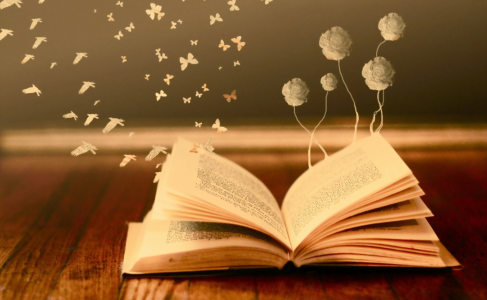Inspiration for this post: A Children’s Lit. seminar which mentioned this briefly, but for some reason caught my attention and I haven’t stopped thinking about it since.
A plethora of critics have written on the problematic character of Tinkerbell, but for the purposes of this post, and to differentiate between an essay and a blog, I’m sticking to my own thoughts.
In my Peter Pan lecture a few weeks ago, it was established that 1) Peter Pan is ageless, and intentionally so. He is the same height as Wendy yet still has his baby teeth. 2) One of the book’s main purposes was to socialise children to cope with aging and the expectations of society. (Another was, obviously, entertainment for young children idolising Peter or Wendy.) Why then, is Tinkerbell so sexy?
To illustrate my point, she is initially described as, ‘exquisitely gowned in a skeleton leaf (fine) cut low and square through which her figure could be seen to the best advantage.’ It then goes on to describe her hourglass figure. I’m sure in your remembering of this stand-offish but overall innocent fairy, you’ve forgotten this disturbing description, which appears to be from a creepy man looking through a private window. There is absolutely no mistaking the seductiveness of her here, and the focus on the attractiveness of her figure, made all the more disturbing as we first encounter her in the children’s bedroom.
Unfortunately, this is not the only worrying physical description, as later on, Peter (ageless child) threatens to ‘open the curtains [to her “boudoir”], then we shall all see you in your negligee.’ Note, ‘negligee’, not nightie or pyjamas. This is not an isolated case, and a literary loose end which I feel has gone under the radar of the general reader, probably because unfortunately most of us remember only the censored, ‘sanitised’ Disney film version and forgo the original source.
The film however is not entirely blameless, as some of Tinkerbell’s sexuality has inevitably leaked onto our children’s screens. In particular, her behind seems to be a worrying focus (if you happen to be looking explicitly for these things as evidence for a blog on Tinkerbell’s disturbing sexuality…). She is tapped (read: spanked, if you prefer) on her behind to get more fairy dust – Initial thought: why not shook? Why not tapped on the head? Additionally, at one point, she flies in to a keyhole and gets stuck headfirst. For the viewer however, this essentially leaves us with an image of her arse with her skirt up to reveal her underwear. Although both images are fairly fleeting in the film, their presence at all raises interesting question echoed throughout this post of who Tinkerbell was created for (Hint: It certainly wasn’t the kids).
* I just had to google ‘Tinkerbell spanked’ in the Uni library for this image. I hope you’re happy.
Back to the book briefly. There is a small detail in the book which was thankfully omitted by Disney and it’s this line at the end of chapter 6: ‘Some unsteady fairies had to climb over [Peter] on their way home from an orgy.’
Possible initial thoughts –
• ‘Hannah’s making that up, or exaggerating for comic effect, that can’t be in my beloved Peter Pan!’ I promise I’m not, look it up for yourself. A direct quotation.
• ‘It must have had a more innocent meaning when this was initially published.’ Nope. I thought the same, but the OED defines it as ‘An occasion of feasting or revelry, esp. one characterized by excessive drinking and indiscriminate sexual activity’, so pretty much exactly what you were thinking and never imagined Tinkerbell doing.
For ages, this got me thinking ‘Why would Barrie include that seemingly insignificant detail?’ And I still don’t have an answer, although it does strengthen this argument. Furthermore (and forgive me if this is extending the point too far), there is a part where Peter’s ‘hand was still messy with fairy dust’ from carrying Tink (presumably the Disney spanking scene). Now this may be me being crude, but the first part of that sentence can only imply one thing, rendering her ‘fairy dust’ as a disturbing innuendo which has no place in the bedtime stories of children. These two sections of the text (if read through this framework), show Tinkerbell as simultaneously sexy and sexual.
When looking at all these examples together, the disturbing problem of overt sexuality in a children’s story is made abundantly clear in an alarming way. Unfortunately I can’t answer why this is the case (there’s probably some highly intellectual criticism on this online somewhere with all these answers), however it does make it clear that not all of this narrative is intended for children of the same age as the Darling children, and that, much to my dismay, Tinkerbell is essentially a lascivious tart that perhaps isn’t the best role model for young girls to dress up as for their dad’s work Christmas party in 2003.


